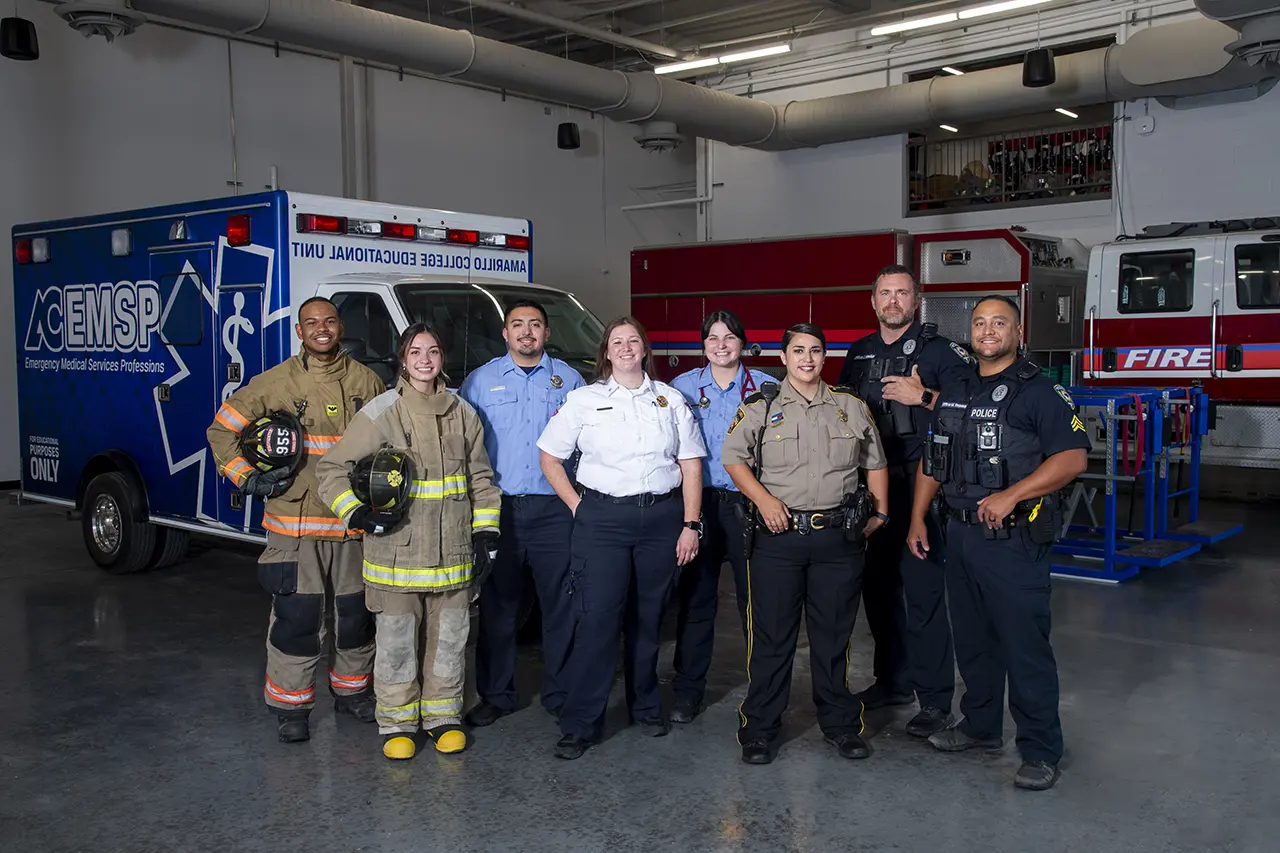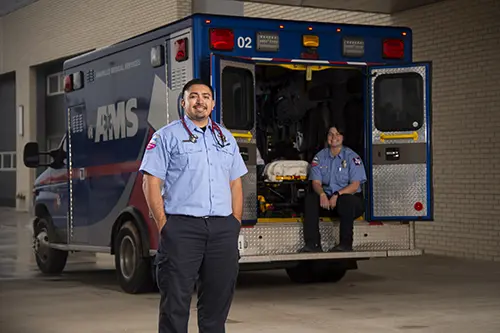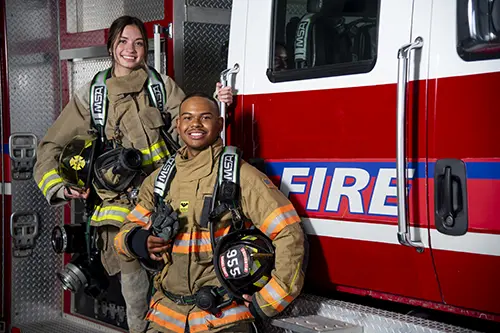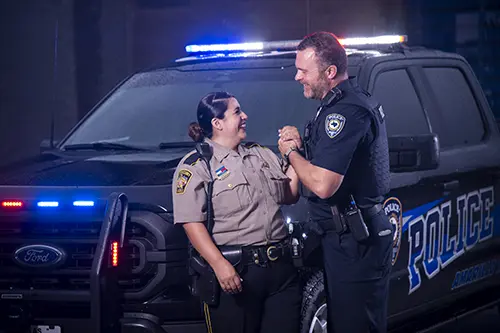First Responders Academy
First Responder Programs
The new First Responders Academy at Amarillo College will serve as a unique and essential hub for Emergency Medical Services (EMS), Law Enforcement, and Fire Protection Technology training. By bringing these critical disciplines together in one space, the Academy aims to create a dynamic environment that fosters collaboration, enhances cross-disciplinary knowledge, and ultimately produces well-rounded and highly skilled first responders.

Responding to the Needs of the Texas Panhandle
Amarillo College trains over 98% of all first responders throughout the Texas Panhandle, making AC’s first responder programs crucial to the entire region. According to the U.S. Department of Health and Human Services-Health Resources and Services Administration, of the 26 counties that make up the Texas Panhandle region, 17 are designated as Medically Underserved Areas (MUA), and an additional four counties have MUA districts within the county. As a result, rural communities in the Panhandle region rely heavily on AC to train their healthcare workers and first responders in Fire, Law Enforcement, and EMS.
The First Responders Academy at Amarillo College boasts a meticulously designed building layout that is a hub for comprehensive training in emergency services. The facility has been thoughtfully organized to replicate real-world scenarios, offering trainees an immersive and effective learning environment.
Degrees & Certificates Offered

Emergency Medical Services
The Emergency Medical Services Program provides education for all levels of pre-hospital emergency personnel. All curricula comply with the Texas DSHS administrative code NREMT, which is required to allow AC graduates to sit for the certification exam, which is the first step in acquiring a Texas certification or license.

Fire Protection Technology
Basic Firefighter Certificate begins with an introduction to firefighter safety and development. Topics include Texas Commission on Fire Protection Rules and Regulations, firefighter safety, fire science, personal protective equipment, self-contained breathing apparatus and fire reports and records.

Criminal Justice Programs
Criminal justice programs cover everything from research methods and statistics to corrections to criminal law. Students learn how the courts, corrections institutions, and law enforcement agencies function. Those who earn a degree often accept jobs as police officers, crime scene investigators, probation officers, or FBI agents.
Director & Advisor
Eric Wallace
Director of Public Service Programs
- Phone: (806) 457-4464
- Email: ecwallace@actx.edu
- Address: 3891 Plains Blvd.
Amarillo, TX 79102
Raul Dominguez
First Responders Academy Advisor
- Phone: (806) 457-4468
- Email: rrdominguez@actx.edu
- Book an Appointment
- Address: 3891 Plains Blvd.
Amarillo, TX 79102